A.J.S. Rayl • Mar 05, 2018
The Mars Exploration Rovers Update: Opportunity Logs 5000th Day, Snaps Selfie, and Roves On
Sols 4986 - 5013
The Mars Exploration Rovers (MER) mission has made so many scientific discoveries and established so many records so consistently during the last 14 years that Opportunity’s achievements have become so commonplace they often go unreported in the major newsfeeds these days. But when Opportunity’s 5000th day dawned in February, it was a meaningful milestone for the team, and it led to a personal first for the veteran robot field geologist that has chalked up so many firsts she’s set the standard for Mars rovers.
“Five thousand is a very, very big number,” said MER Principal Investigator Steve Squyres of Cornell University.
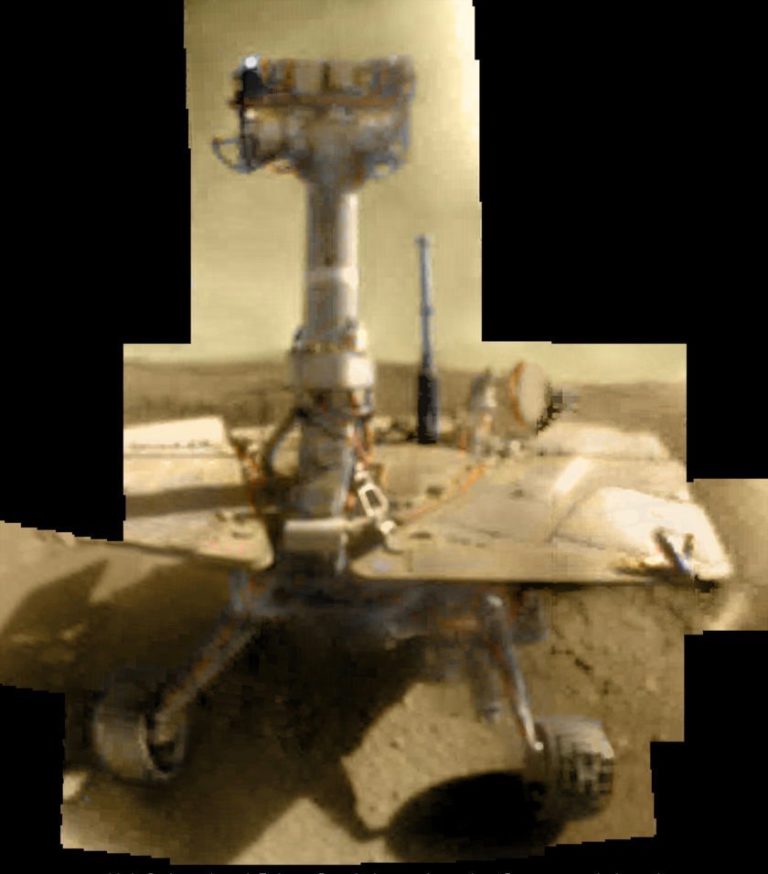
It’s a Martian tally, a number nobody contemplated or could have comprehended back in 2004 when Spirit and then Opportunity rolled off their landers to begin Earth’s first overland expedition of Mars. Just like no one contemplated five years or 10 years or 14 years.
A Martian day or "sol" lasts about 40 minutes longer than an Earth day, and a Martian year runs almost two Earth years. Opportunity's Sol 1 was landing day, the evening of January 24, 2004, Pacific Standard Time (early morning January 25, 2004 Universal Time). The primary mission for each rover was planned or “warrantied” to last 90 sols.
“I felt confidant that as long as we survived the landings that we would get 90 days out of the vehicles,” Squyres remembered. “I was pretty confident that we would get twice that, six months. And maybe, maybe if things really went our way, as much as one year. But 5000 sols?” He just shakes his head side to side.
Spirit and Opportunity surprised every one, including their human handlers. With their human-like personalities, never-give-up determination, remarkable resilience, and a kind of tenacity defined in these pages as MER metal, the twins endeared themselves to people around the world. Each met all the objectives during their primary missions, and made headlines, sending home science gold in evidence of past water environments on ancient Mars.
Spirit went on to explore the Columbia Hills and its surroundings, making history as the first robot to scale a hill, the first to discover near pure opaline silica, and first to send home evidence of carbonates, signs of water we might drink. After more than six challenging but highly productive years in an unforgiving Gusev Crater, Spirit went into low energy hibernation in March 2010 as the mission’s fourth winter took hold. We never heard from her again.
Opportunity trekked onward and in August 2011 pulled up to the outer western rim of Endeavour Crater and into area called Cape York. She would soon find evidence for ancient clay minerals, known as smectites, and the most ancient Martian ground ever found by a surface mission on Mars. Today, this rover continues to explore the big crater’s rim farther south at Cape Byron, from inside Perseverance Valley, a channel that cuts through the rim segment west to east, from crater rim to floor.
“We have watched Opportunity overcome so many obstacles and do so many things – we’ve watched her wander into and around craters, drive across a sea of ripples and dunes, and we have gotten stuck a number of times and managed to get ourselves out,” said MER Engineering Team Chief Bill Nelson, of the Jet Propulsion Laboratory (JPL), where all of NASA’s Mars rovers were born. “We have watched various astronomical events, like Comet Siding Spring, and imaged the Martian moons, and dust devils moving by,” he continued. “We have watched landers come in and we have watched orbiters arrive. We’ve done a lot of different kinds of things and in the process we have made a number of scientific and engineering discoveries. Through it all, our rover just keeps going and going.
With Sol 5000 coming as it did in the contrails of the 14th anniversary of surface operations and 14th birthday for Opportunity in January, the significance of this Martian measure of mission longevity was generally lost on Earth’s population at large. Still, 5000 sols is – big.
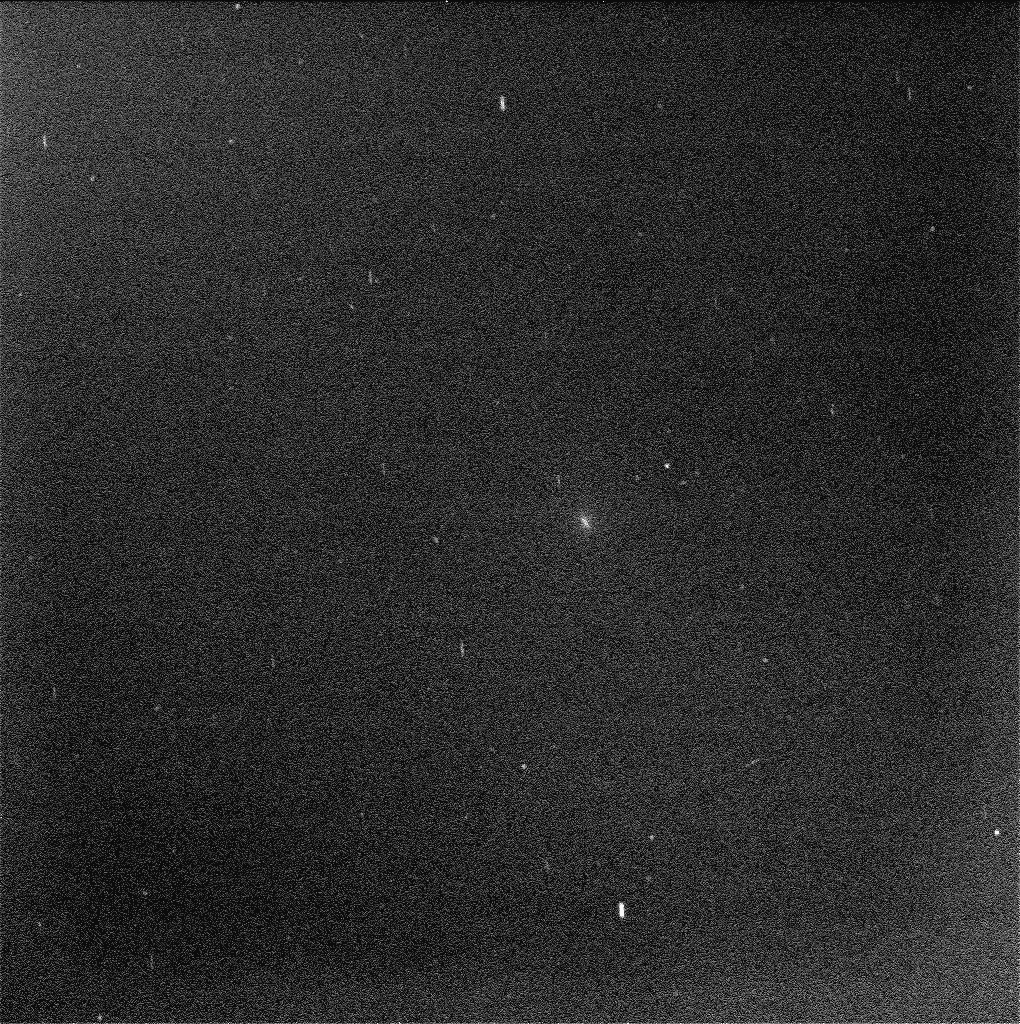
That Opportunity is still the rover that loves to rove despite a broken shoulder and a drive strategy that requires she steer only with her rear wheels is also big. The robot is currently doing an admirable job of adapting and navigating her way down, up, and along the slopes inside one of the most exciting, important, and intriguing geological sites of all her years on Mars.
“It’s crazy. I’s unbelievable, but here we are – still operating.” MER Mission Manager Scott Lever, of JPL laughed. Joyfully. There was a time long, long ago when he assumed this mission would be the shortest of his career. “Five thousand sols on a 90-sol mission? It’s mind blowing.”
The mind-blowing milestone day occurred February 16th at the rover’s mission control at JPL. To document the achievement, a small group of human colleagues at JPL helped Opportunity take a series of tiny pictures with her Microscopic Imager (MI) camera and capture her selfie self close-up. Then Opportunity got back to the science at hand, or, specifically, at arm’s length in Perseverance Valley.
"We've reached lots of milestones, and this is one more," said MER Project Manager John Callas, of JPL, “but more important than the numbers are the exploration and the scientific discoveries."
On Earth, the MER scientists gathered for their annual meeting on February 22nd and 23rd at Caltech in Pasadena, CA to discuss the latest discoveries and exploration. During their daylong science sessions, the scientists meet face-to-face to let science ring, when they share and debate and argue and propose sometimes wild and crazy things and otherwise catch up, according to mission officials. While the MER ops engineers are invited, media are not.
It’s a safe bet though that the MER science team discussed Opportunity’s latest finds and the best, next place to go, and not the Sol 5000 achievement. There has rarely been any slowing down on this mission, save for a handful of unforeseen events and solar conjunctions (when communications between Earth and Mars are blacked-out for a couple of weeks). And, since the rover is always awaiting her next commands, there is never much time to spend reflecting on the mission’s laurels anyway.
Besides that, the future outlook for research in Endeavour’s rim looks as good as the past. From the most recent looks of things, there are likely more discoveries just waiting to be uncovered in the post 5000 Sols world. “Perseverance Valley really is like a new mission again after all these years," said MER Deputy Principal Investigator Ray Arvidson, of Washington University St. Louis (WUSTL). "We knew even before we got here that it was unlike any place any Mars rover has seen before. But it just continues to be mysterious and that’s exciting.”

With the help of the Martian winds blowing up from the floor of Endeavour Crater, much of the accumulated dust on her rover’s solar arrays has been whisked away and Opportunity is literally empowered with newfound energy and ready to continue the expedition. “We went from struggling through this winter to now we’ve got crazy beautiful power margins that are so fantastic,” said Lever. “We’re just running on all cylinders right now.”
As February wound down, Opportunity was completing her imaging of everything in sight from a parked position in between the north and south troughs. The rover is slated to drive in March, probably over to rocks exposed at the tip of a feature the scientists are informally calling ‘the island,’ a rock-rich target that from the rover planners’ (RPs’) perspective is easiest for the rover to get to for close-up work.
It may be that Opportunity is getting a little farther into another ancient scene that just may lead the mission farther back in Martian geological time, deeper into the Noachian Period some 3.7 to 4.2 billion years ago when Mars had water and was more like Earth. The rover and the scientists are still investigating any and all interesting clues they can find in Perseverance Valley, clues that eventually will tell them if this place was carved by water or ice, or wind or maybe some kind of debris flow.
“We have been looking forward to Endeavour Crater for so long and driving into it as we have has been breathtaking,” said Barbara Cohen, of NASA Goddard Space Flight Center, a member of the MER science team. “Every time we get a new vantage point, it’s just breathtaking. I think there’s a lot more geological diversity in Perseverance Valley than we expected. We hoped for more with Endeavour. The fact it’s delivering is just fantastic.”
In recent weeks, Opportunity has been sending home images of rocks distinguished by their rough, pitted exterior that could, perhaps, indicate a volcanic origin, along with images of terrain surfaces that look like stone stripes, little formations where the soil and gravel particles appear to have become organized into narrow rows or corrugations parallel to the slope, alternating between rows with more gravel and rows with less. These rocks and the stone stripes may be hints that the mission is driving deeper into Mars’ geological history.
“We don’t know what happened here yet,” cautioned Arvidson. “But we’re going to take our time to find out what’s going on.” The general plan forward and the objective remain the same. “It’s all about continuing downhill and looking at the morphological features, the chemistry, and the fine scale details, the sediment fill and the modern fill, and the stone stripes to decipher what’s going on, what formed this valley.”
As grand a day as Sol 5000 was, the mission has moved on. Because that’s what this rover and this team do. “Here all is well,” emailed Rover Planner Paolo Bellutta, as he worked on planning the next drives at month’s end. “I got my Guinness World record certificate for longest driven distance on Mars, we completed the selfie on 5006, and we continue working.”
Opportunity is budgeted to keep exploring Endeavour through 2018. At NASA HQ’s request, the MER team officials are preparing an 11th mission extension proposal for 2019. [From that point, mission extensions, according to reports, will be submitted every three years as opposed to every two as it is now and has previously been.]
“If everything goes well,” summed up Squyres, “we should be here next year with a bigger number of completed sols, more cool stuff to talk about, and a plan for the next mission extension.”

How 5000 Sols on Mars Has ‘Hit’ Earth
Still, 5000 sols is – big. Equivalent to about 14 Earth years or 7 Mars years, it’s a long time. A new generation has been born. Older generations have devoted a significant chunk of their lives, where every thing, from the beginning of the mission to this 5000 Sols signpost in the metaphorical Martian terrain, has come to pass…all the discoveries…adventures…good times and bad times…the thrills of Martian summers…the agony of Martian winters…and the answered Hail Mary’s…all of it.
So, during the last sols of February, a few MER team members answered the request to offer up their thoughts on what 5000 Sols means. From those conversations, here are the Top 5 impacts these 5000 Sols on Mars have had on Earth:
Created a timeline to gauge life
No matter how view it, 5000 Sols is a span of time that offers a timeline by which one can gauge events and advances in life. For MER Project Scientist Matt Golombek, of JPL, the “most interesting” aspect in reflecting on 5000 sols is the progression of peoples’ careers.
“We have a graphic that shows the trajectory of Abby Fraeman, beginning when she was in high school when the mission began,” he noted. “And then she went to college and then grad school, and a post doc appointment. Now, she’s at JPL where she is the Deputy Project Scientist on the mission,” Golombek said with his characteristic ‘isn’t-that-amazing’ chuckle. “It’s beyond what anyone could have ever have conceived.”
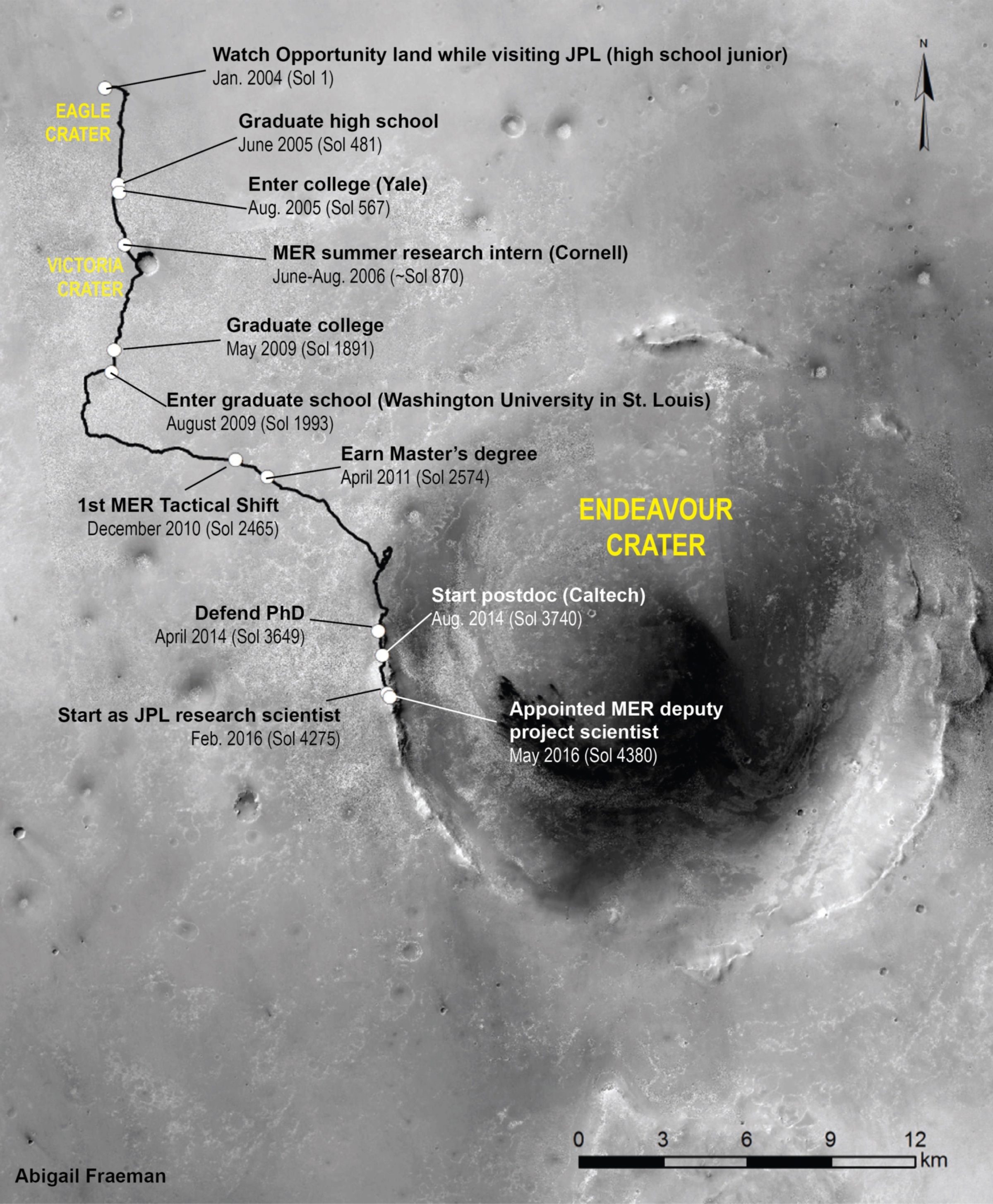
Fraeman may be the most dramatic example, however, a number of others on the team signed on for starting positions and have moved on more advance jobs, and / or leadership positions.
Provided elite training ground
The mission’s longevity has transformed its operations – or ops – into a recognized training ground for planetary exploration operations. “It’s not often that people in our community get a chance to do operations for spacecraft,” noted Cohen. “We do have a fair amount of operating spacecraft/ However, the way we have integrated the scientists and engineers together on tactical operations, is such a unique experience,” she said.
With this inclusive, integrated approach to teamwork, MER ops provides “a fertile ground” for “understanding how to operate the spacecraft and how to build teams and how to keep teams going and how to transfer knowledge between people,” she explained. “There is always something new we’re learning. With every plan, I learn more about Mars and Opportunity, and about operations in general. For those of us who want to do other missions eventually, I put a lot of stock into my experience with Opportunity.”
With longevity comes experience and sharpened skillsets. Consider that with a younger vehicle or a less tested vehicle, the MER team may not be driving down Endeavour’s rim like it is now. “But with us, it’s – yeah,” said Cohen. “We’ve got the chops.”
Made Working on Mars Real
“I had to actually think about this, because the mission has become part of the daily routine,” said Wendy Calvin, of the University of Nevada Reno, a member of the MER science team. “You check your email, have a cup of coffee, go to Mars. It’s become part of the daily routine,” she said.
“It’s a very different feel than it was when we landed and we thought the rovers could imminently die at any moment,” she continued. “At this point, we have a really well established routine. At this point, I’ve been a part in MER operations better than half of my professional career. That is something I never, ever thought would have happened. Fourteen years, 5000 sols later, it’s like – wow! It’s so much a part of my career and my life, it’s become habit.”
The luxe 360-degree panoramic images that Spirit and Opportunity turned into hallmarks of the MER mission made Mars much more visually familiar to all of us Earthlings. Standing about five feet tall, the rovers, with their stereo Pancam “eyes,” view the landscapes in 20/20 vision, thus designed to shoot the landscape like we would if we were there. Because of the hundreds of thousands of images they have returned, we know what Mars looks like now, at least parts of it.
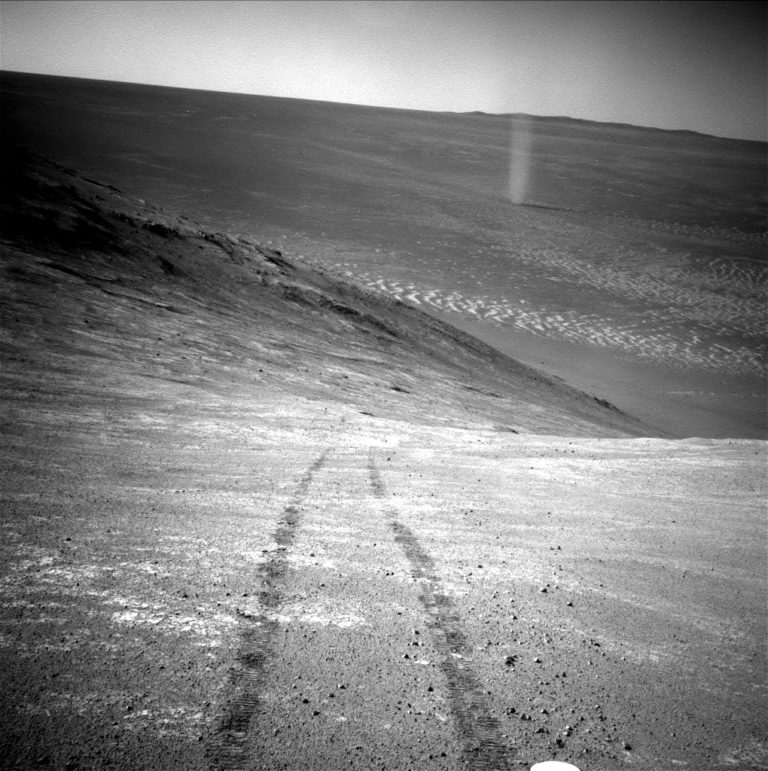
For the team members, those Martian landscapes have become an integral part of their everyday world. “When we think about it sometimes, Mars can seem like home,” said Nelson. “We’ve been there so long, we’re almost natives.”
Forged cooperative team dynamic
By actually working with each other and together, something Squyres instilled as a rule of the Martian road, the MER scientists and engineers have forged a “cooperative” team dynamic. Each instrument team works with the other instrument teams for a common science objective.
“We’ve become comfortable with each other, and we’re a team that functions well,” said Cohen. “We don’t have a lot of fussing and feuding and fighting. I think the fact that we all believe the rover is still going to have a good life adds to being comfortable. If I can’t get my observation today because you need yours, then I’ll get mine tomorrow. That’s okay.”
Created first family of Martian explorers
From the sense of teamwork – and over the course of years of daily and/or weekly telecons, the annual meetings and all the conferences – a “family” evolved, said Golombek. “There has been a changing in the scientists and engineers involved, but I would say a good three-quarters of the scientists in this year’s meeting were there in the beginning. We are a family.”
It is in that spirit or with that spirit that humans on the MER mission have been exploring Mars for the last 5000 sols. That is not to say there aren’t important differences between the capabilities of humans and machines.
“I don’t think that we as humans could have survived that early [MER] mentality of 24/7, whatever it takes, and let’s make sure we get the information before we die at the end of 90 sols,” said Calvin. “In 5000 sols with the rovers though, we have been through crises, a lot of stuff that let’s us know that we can manage this mission and manage the longevity and still get good science.”
As the MER team members view it, being there on Mars vicariously with Opportunity, and with Spirit before, doesn’t diminish the human presence. “When people talk about the difference between humans and robots, well – we humans are there on Mars now,” said Golombek. “We are and have been the human consciousness on Mars for the past 5000 sols, or 14+ years that we’ve been exploring.”
Deep Dive into February 2018
Opportunity woke up to February 2018 in a power-rich state. Winds from Endeavour’s floor continued to swirl up and dust the rover’s solar arrays as the month took hold, and the robot was producing more than 650 watts of power.
After completing her investigation of a target on an outcrop named Jornada del Muerto, where the mission was stationed at the end of January 2018, Opportunity took a combination of Navcam and color Pancam stereo panoramas, as well as some targeted multi-spectral Pancam images. The analyses are still underway, but Jornada del Muerto may be similar to the so-called blue rocks, including Sgt. Charles Floyd, which the rover examined in Marathon Valley in December 2015.
From her position near the southern margin of the north fork of a local ‘flow’ channel or groove, less than halfway down the valley, Opportunity’s first science task of the month was to offset the placement of her APXS on Jornada del Muerto, to a related surface target on Sol 4986 (February 1, 2018). Improved energy levels allowed the rover to be active longer each day and occasionally overnight. With the improved energy levels, the rover was able to run the APXS overnight for a long integration at favorable instrument detector temperatures.
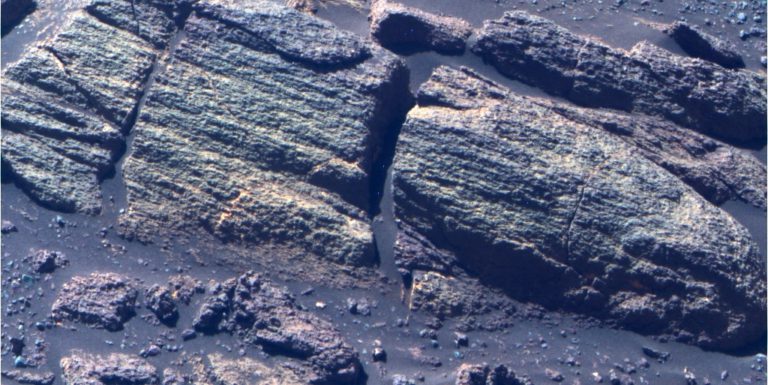
Opportunity continued the APXS integration into the next sol, 4987, stopping before midnight. During the next two sols, 4988-4999 (February 3-4, 2018), the rover conducted shorter integrations in addition to taking some sweeping Panoramic Camera (Pancam) color stereo panoramas.
On Sol 4990 (February 5, 2018), the rover backed up about 4 meters (about 13 feet) to set up for approach to an uphill target. Then, the following sol, 4991 (February 6, 2018), she hit the gas, climbing uphill, about 4 meters (about 13 feet) straight north. As a result of the difficulty in tracking the progress with Visual Odometry (VO) in this tricky terrain, Opportunity stopped about 1 meter (3.28 feet) short of the intended target. No big deal. As a result of her newfound energy, she was able to work while the RPs assessed the drive challenges and conducted an overnight APXS measurement of atmospheric argon on Sol 4992 (February 7, 2018).
The rover easily completed the drive as the second week of the month got underway on Sol 4993 (February 8, 2018). Bumping 2.5 meters (about 8.2 feet) north, Opportunity reached the chosen surface targets at a site named Nueva Vizcaya. The robot then spent the next two days – Sols 4994-95 (February 9-10, 2018) – using the instruments on her IDD or robotic arm to check out the outcrop. Following routine science protocol, she used her MI to take the close-up pictures needed for larger mosaic images, and positioned her APXS on a pair of offset targets to determine chemical makeup of the rock.
With that assignment finished, Opportunity took off on Sol 4997 (February 12, 2018), driving backwards to the south for 16 meters (52.49 feet) with a pause in between to perform some targeted remote sensing. It was “a good drive,” said Bellutta, who has worked with the team to chart the rover’s drives since Victoria. “We slid downhill a bit, but much less than I was expecting. We try to be gentle when doing heading changes now and avoid toe-in point turns. This complicates the way we command the rover and it’s less predictable where we end up, and at what heading. All this impacts the overall performance of the mission, but we try to continue to please our science team members,” he said.
MER is and has always been a science-driven mission. The drive put the rover “almost halfway down the valley” and positioned “between the south and the north trough,” said Arvidson. “We can see both of them and are just above this feature that is kind of oval shaped or lozenge shaped feature informally known as ‘the island,’ which is now just downhill from where we are.”
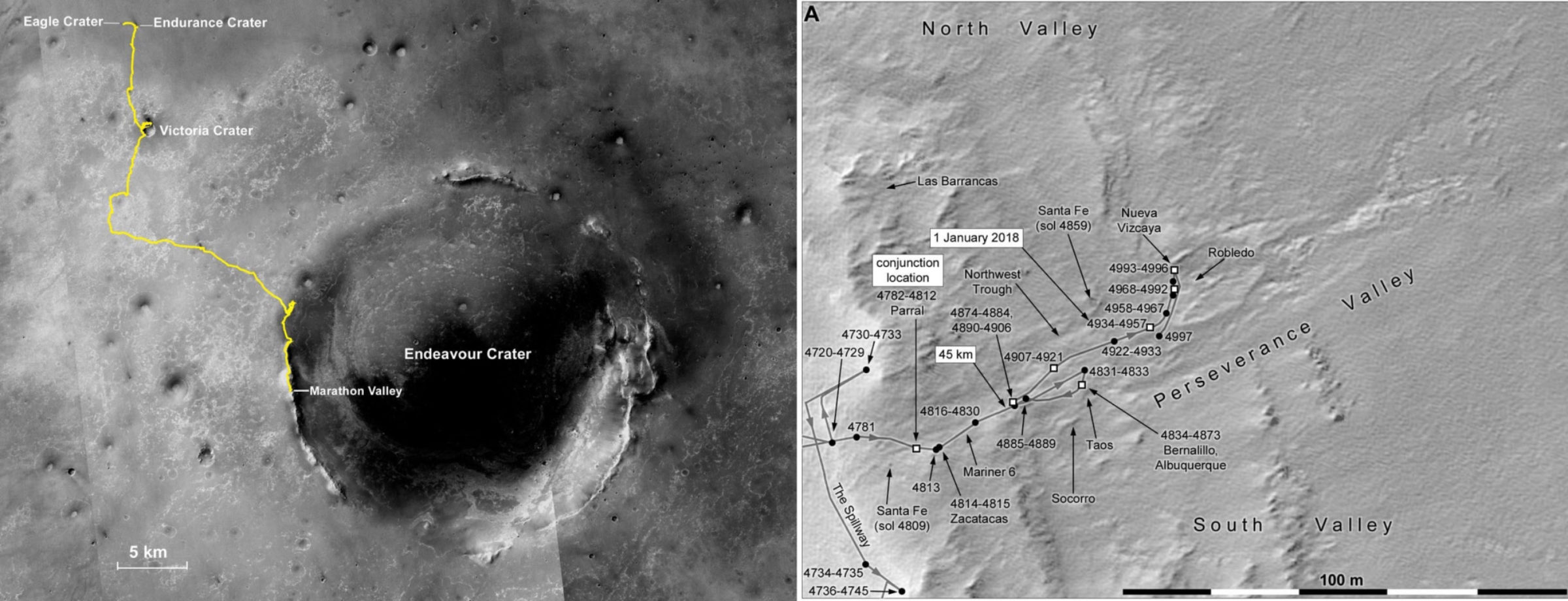
During the third week of February, the MER ops team uplinked two 3-sol plans to Opportunity, one on Friday, February 16th, and another on Tuesday, February 20th. With those commands, the robot would focus her cameras on ‘the island’ and the tracks she had generated driving up to it. “It was all about imaging this putative island feature,” said Arvidson.
But first there was a milestone to document. It began when Opportunity freeze-framed a color sunrise image with her Pancam the morning of Sol 4999 (February 15, 2018). In a matter of hours, on February 16, 2018, the longest lived robot on another planet would complete 5,000 sols on the surface of Mars. From the rover's perspective on the inside slope of the western rim of Endeavour Crater, the milestone sunrise appeared over the basin's eastern rim, some 22 kilometers (about 13.7 miles) away.
Since landing, Opportunity has driven more than 45 kilometers (28 miles) to her current location almost halfway down Perseverance Valley. She has returned more than 225,000 images, all available online, and so much more, as previously noted. In the days – days, not weeks or months – leading up to this mission milestone, the rover took part in a plan to memorialize this magic moment.
Of all the things she has done, Opportunity had never actually taken a full body, self-portrait. Yes, Spirit, back in 2009, took some tiny images for a mosaic of her belly and ground beneath her, looking for potentially dangerous rocks when she was stuck in the sand-filled crater in Troy, near Home Plate. But neither MER had ever taken a full-on selfie. Curiosity had a batter camera to do the job, but neither of the MERs had been so bold to turn their MIs on themselves.
People had talked about the possibility for years. Visualization Producer and Engineering Camera Payload Uplink Lead for Opportunity and Curiosity, Doug Ellison (who created Unmanned Spaceflight.com, now a project of The Planetary Society before landing his dream job at The Lab) wanted Opportunity to do take a selfie for 10 years, he said in a Twitter post.
Rover Planner Ashley Stroupe, of JPL, was talking about it a lot as Sol 5000 approached.

Opportunity would carry out this assignment by aiming her Microscopic Imager (MI) on the end of her IDD or robotic arm at herself and take a series of tiny pictures to be stitched into a larger mosaic portrait. Stroupe began laying the foundation for team acceptance, rallying the forces. She emailed the Sol 5000 Science Operations Working Group (SOWG) chair, Aileen Yingst, a Senior Scientist at Planetary Science Institute and member of the MER science team, and ensured that Keri Bean who was slated to be the Tactical Uplink Lead that sol, was onboard.
The MER selfie crew, which included Ellison, and RP John Wright, brought up their proposed imaging assignment for Opportunity at the pre-uplink tag-up meeting. “Then we had to work our way through Mission Manager Matt Keuneke that day, Project Manager John Callas, and Arvidson, who was the acting principal investigator on that particular sol,” said Stroupe.
“When Rob Sullivan [of Cornell, another member of the MER science team] said: ‘If we were going to do it, let’s make sure we get it,’ the selfie shot suddenly became “the top data priority for the day,” she remembered.
With Wright and Ellison, Stroupe worked on determining the best MI pointings so the rover would get as much of her body in the self-portrait as possible. The biggest challenge was that their software tool did not properly model the imager’s field of view. That meant they had to rely on some guesswork. [Since then, Wright has fixed that issue so there won’t be a next time.]
On Sol 5000, Ellison and Stroupe arrived early for the uplinks. “We deliberately kept it simple so we could keep it fast, and within reasonable data volume,” said Stroupe.
With the good guesswork and concise calculations she was given, Opportunity handled her MI like a Go-Pro fanatic and all but a small part of the rover’s right front wheels and solar array was acquired. The images, though expectedly a little blurry, turned out so good, the selfie crew decided to ask to try to fill in more frames, something Opportunity did about six sols later. Other JPLers, including Hallie Gengl, Stephanie Oij, and Nick Ruoff worked with Ellison to complete the image processing and NASA-JPL soon issued a black and white version.
“When I heard about this, I thought ‘Wow man, we have never done that,” said Calvin. “Maybe because we were worried about the flex cables and have only 1-degree of freedom on the arm. But the image actually really brought us home. Here are our eyes on Mars. Getting that picture was just really sweet.”
Oppy’s selfie created enough excitement among the team members and the community that Stroupe is talking about finding some way to get the last missing pieces. “And the rest is history…future!” she emailed.
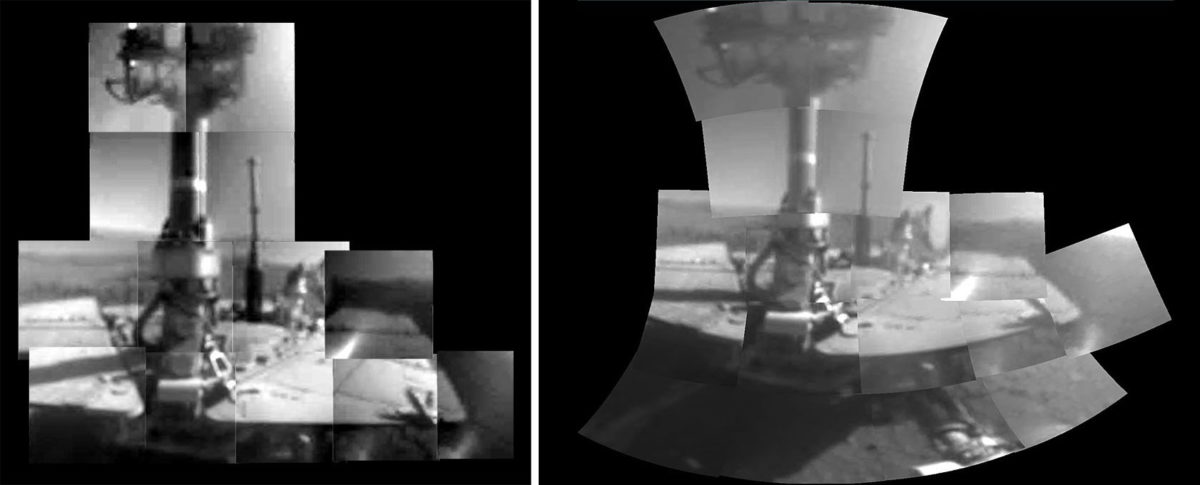
After her selfie moment on her 5000th Martian day, Opportunity got back to work, imaging her surroundings and pointing her APXS skyward on Sol 5001 (February 17, 2018), to take an atmospheric argon measurement (APXS), for mission-long research.
A team of MER scientists, Scott Von Bommel and Ralf Gellert (University of Guelph), Ben Clark (Space Science Institute), and Doug Ming (NASA JSC), analyzed argon data that Opportunity collected over six Mars years (about 12 Earth years) to study of the variability of seasonal atmospheric argon in the equatorial region of Mars. In their peer-reviewed article, published in the Journal of Geophysical Research Planets in February 2018, they announced finding “strong evidence for a northward migrating front enriched in argon and sourced from the south pole” at the end of winter in the southern hemisphere of Mars.
During the latter part of February, Opportunity continued to take extensive stereo color Pancam panoramas and Navcam panoramas and the MER ops team worked on the rover’s next destination routes. At the direction of the MER scientists and engineers, the robot field geologist is taking her time, proceeding slowly and carefully.
“Putting out the good science means we continue to get extended missions and be of value to NASA,” said Cohen. “It’s a really nice balance.”
Taking in the rocks and the views and searching for any little clue that might guide the team to determining if it was liquid water, melting ice, debris flows, or wind that created this singularly distinctive feature into the big crater’s rim, Opportunity is methodically making her way through the valley, looking for the good science. At the same time, said Arvidson, “we’re optimizing observations to test the hypotheses.”
As February came to a close on Sol 5012 (February 28, 2018), the skies over Endeavour were mildly hazy with the Tau recorded at 0.426. Opportunity had 45.11 kilometers (45,117.83 meters; 28.03 miles) on her odometer and was producing upwards of 670 watt-hours, with a dust factor of 0.856. “Engineering wise, we are in great shape,” said Nelson.
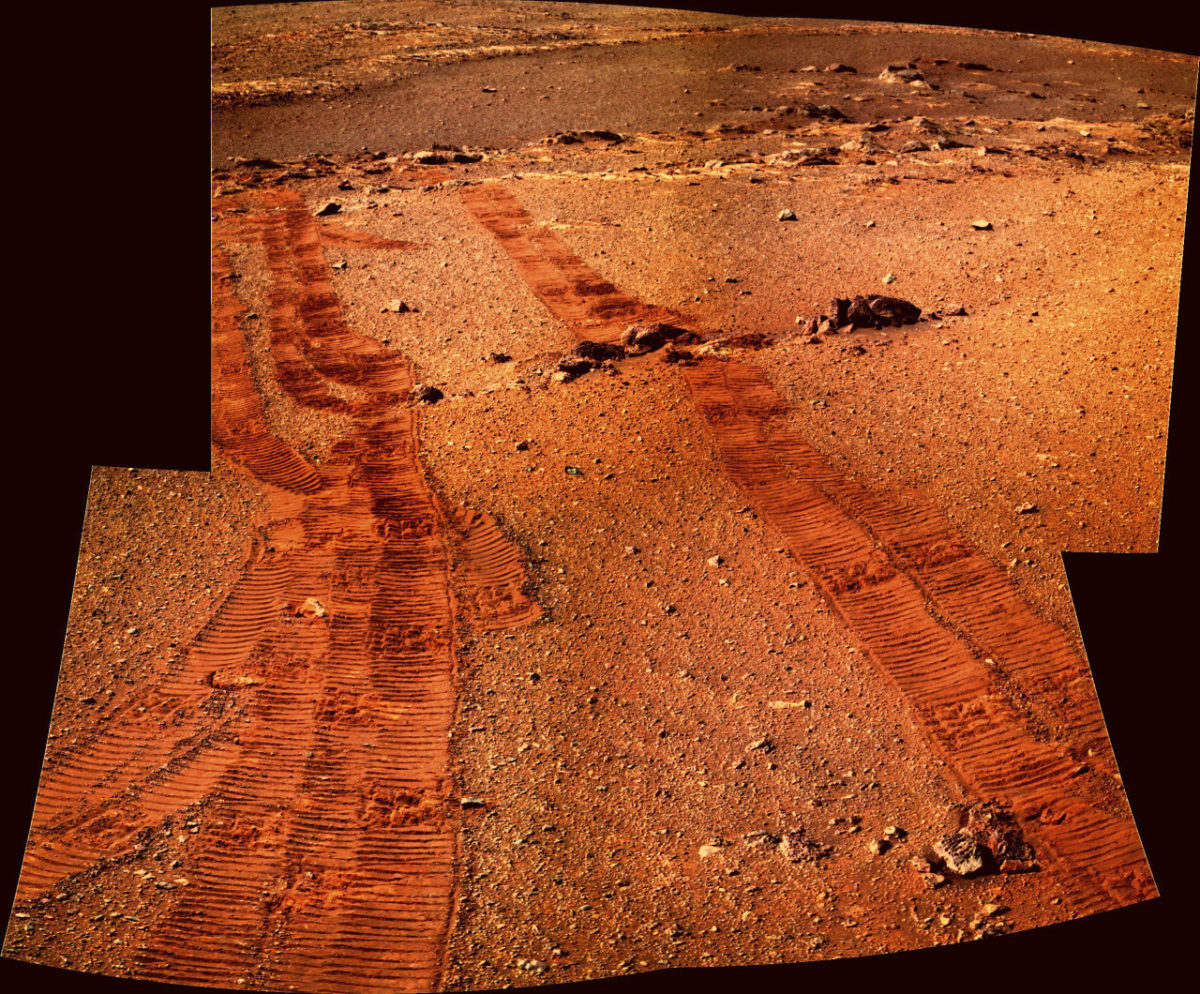
That’s great news because neither Opportunity nor the MER scientists have any desire to stop now. The rover has spotted a grouping of what looks to be vesicular rocks over at the southern trough. One can see they are texturized, marked with pits and cavities (or vesicles) on their surfaces that may imply these rocks are volcanic in origin. “I’d be happy to find life on Mars, but that’s not what motivates me,” said Cohen. “What motivates me is how did the planet form and how did their surfaces evolve? Volcanism is one of our main planet creating, planet-modifying events, so having evidence of volcanism would be an important find,” she explained.
“When we look at the surface of Mars from orbit, through thermal sensing, we see the giant volcanoes, but they’re covered in dust, and so it’s really hard to see what they’re made of, and it’s really hard to see from orbit,” Cohen continued. “And then [as Opportunity drove] across Meridiani of course, there is just no volcanic anything, it’s all sediment. So having a crater punch down below that surface and find volcanic rocks would be really spectacular. We don’t know that they are volcanic,” she was quick to point out. “Not yet.”
Of course, those pit-marked rocks could also have been created at the time of the impact that created Endeavour, or they could be something else altogether. But they’re definitely different from the “standard” Burns Formation and Shoemaker breccias the rover has seen plenty of in the rim. “It may be something that was hanging out below the surface that just got eroded by Perseverance Valley,” said Cohen, “and we’re there to see it.”
Time will tell. But this much we know now: Mars still has plenty of secrets to tell.
Support our core enterprises
Your support powers our mission to explore worlds, find life, and defend Earth. You make all the difference when you make a gift. Give today!
Donate

 Explore Worlds
Explore Worlds Find Life
Find Life Defend Earth
Defend Earth

